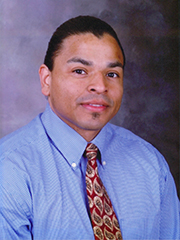Center for Hazardous Substance Research using $2 million EPA grant to assist tribal communities with contaminated lands
Thursday, Oct. 5, 2017
MANHATTAN — The U.S. Environmental Protection Agency has selected Kansas State University to receive approximately $2 million in funding over the next five years to provide technical support to tribes addressing environmentally contaminated lands.
Oral Saulters, project manager for the Center for Hazardous Substance Research in the College of Engineering at Kansas State University, is the lead on the grant, and Blase Leven, associate director of the center, is the co-principal investigator.
The project will deliver technical assistance and education opportunities to the 567 federally recognized tribal communities across the nation in revitalizing brownfields, which are distressed properties with possible environmental issues. The grant will cover the services of more than 20 subcontracted partners — universities, private consultants and nonprofit organizations — who will provide specific assistance to tribes as needed in different areas around the country.
The lead team from Kansas State University will work with tribal program leaders, staff and regional partners to share ideas and insight consistent with local vision and goals during environmental assessment and cleanup, and reuse of the sites. This assistance will include leveraging potential funding sources for contaminated sites; assisting with redevelopment planning and community engagement; aiding in selection of environmental contractors; reviewing and summarizing technical documents; building a liaison between tribal communities and relevant federal and state agencies; hosting a peer-to-peer network for tribal environmental professionals; and offering customized workshops, seminars and trainings.
"Expected outcomes of this initiative will be enhancement and increased capacity of tribal communities, including Alaska federally recognized tribes, to identify brownfield sites, as well as address releases of hazardous substances, pollutants and contaminants," Saulters said.
"Our goal is for tribes to realize the opportunities available when transforming brownfield sites, and to play a major role in cleanup and redevelopment processes. This can assist indigenous communities to reduce the adverse impacts of brownfields and promote self-determined actions in affected areas," he said.
The project will advance common elements of the K-State 2025 visionary plan that include engagement, diversity, sustainability, external constituents, funding from federal and state resources, and technology through the design and application of electronic decision tools.

